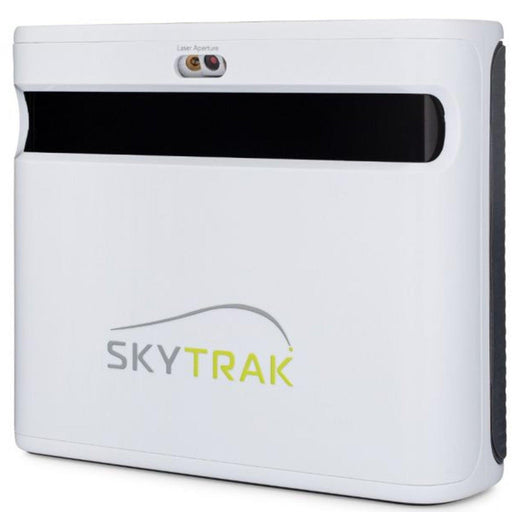Now through January 5th 15% OFF our very popular Vanish and Parlour Enclosures. Coupon code 15SWINGMASS

Crafting a Golf Simulator Business Plan for Prosperity
In the rapidly growing industry of golf simulation, entrepreneurs have a unique opportunity to turn their passion for the sport into a lucrative business venture. Whether you're planning to open a dedicated golf simulator facility or incorporate simulators into an existing business, a well-thought-out business plan is essential for success. In this blog post, we'll explore the key elements of creating a comprehensive golf simulator business plan that lays the groundwork for prosperity and growth.
1. Market Analysis:
Before diving into the specifics of your business plan, conduct a thorough market analysis to understand the landscape of the golf simulator industry. Identify your target market, including demographics, preferences, and buying behavior. Research competitors, assess their strengths and weaknesses, and identify opportunities for differentiation. Understanding the market dynamics will inform your business strategy and help you position your offering effectively.
2. Business Model:
Define your business model, outlining how you plan to generate revenue from your golf simulator venture. Consider factors such as pricing structure, membership options, and additional services or amenities you may offer, such as equipment rentals, coaching sessions, or event hosting. Determine your competitive advantage and value proposition to attract customers and differentiate your business from competitors.
3. Location and Facility:
Choose a strategic location for your golf simulator facility that maximizes visibility, accessibility, and foot traffic. Consider factors such as proximity to golf courses, demographic trends, and local competition. Design your facility layout to optimize space utilization and create an inviting atmosphere for customers. Ensure that your facility meets all regulatory requirements and provides a comfortable and enjoyable experience for patrons.
4. Equipment and Technology:
Invest in high-quality golf simulator equipment and cutting-edge technology to deliver an immersive and realistic experience for your customers. Research different simulator brands and models, considering factors such as accuracy, reliability, and software features. Choose equipment that offers a wide range of courses and game modes to appeal to players of all skill levels and preferences.
5. Marketing and Promotion:
Develop a comprehensive marketing strategy to promote your golf simulator business and attract customers. Utilize a mix of online and offline channels, including social media, email marketing, search engine optimization, and local advertising. Create compelling content that showcases the unique features and benefits of your facility, and leverage partnerships with local businesses and golf organizations to expand your reach.
6. Financial Projections:
Prepare detailed financial projections that outline your expected revenue, expenses, and profitability over the short and long term. Consider factors such as equipment costs, lease or rent expenses, staffing costs, and marketing expenses. Conduct sensitivity analysis to assess the impact of different scenarios on your financial performance and ensure that your business remains viable and sustainable.
7. Customer Experience and Satisfaction:
Prioritize customer experience and satisfaction to build loyalty and drive repeat business. Provide exceptional service, personalized attention, and a welcoming environment that makes customers feel valued and appreciated. Solicit feedback from customers regularly and use it to make improvements and enhancements to your offerings.
Driving Success in the Golf Simulator Industry
In conclusion, creating a golf simulator business plan is a critical step in launching and operating a successful venture in the growing industry of golf simulation. By conducting thorough market analysis, defining your business model, choosing the right location and equipment, implementing effective marketing strategies, and prioritizing customer satisfaction, you can lay the foundation for long-term prosperity and growth. With careful planning and execution, your golf simulator business has the potential to thrive and become a cornerstone of the local golfing community.

Have Questions About Golf Simulators?
Our expert team is here to help you find the perfect golf simulator for your needs.
Featured products
-
SkyTrak+
Original price $2,995.00 - Original price $3,145.00Original price$2,995.00 - $3,145.00$2,995.00 - $3,145.00Current price $2,995.00Introducing the SkyTrak+ Launch Monitor: Unmatched Accuracy and Advanced Features Experience a new level of precision and innovation with the SkyTr...
View full details -
ProTee Majestic Simulator Package
Original price $9,618.00 - Original price $13,848.00Original price$9,618.00 - $13,848.00$9,618.00 - $13,848.00Current price $9,618.00ProTee Majestic Golf Simulator Package: Elevate Your Indoor Golf Experience Transform your home or business into a golfer’s dream with the ProTee M...
View full details -
Eagle Golf Mat
Original price $370.00 - Original price $1,130.00Original price $370.00$370.00$370.00 - $1,130.00Current price $370.00Introducing the Eagle Golf Mat: The Ultimate Golf Experience Are you passionate about golf and demand nothing but the very best in your practice eq...
View full details -
Retractable HomeCourse® Golf ProScreen 180
Original price $2,299.00Original price $2,299.00 - Original price $2,299.00Original price $2,299.00Current price $1,999.00$1,999.00 - $1,999.00Current price $1,999.00HomeCourse® Golf ProScreen 180 HomeCourse® Golf ProScreen 180 is a retractable golf screen and enclosure. HomeCourse® Golf ProScreen 180's ballisti...
View full details -
The Augusta V2 4'x12' 2 Cups
Original price $399.00Original price $399.00 - Original price $399.00Original price $399.00Current price $329.00$329.00 - $329.00Current price $329.00The Augusta is one of Big Moss’ traditional models. It offers unmatched versatility for teaching and year round practice. Make a long-term investme...
View full details





